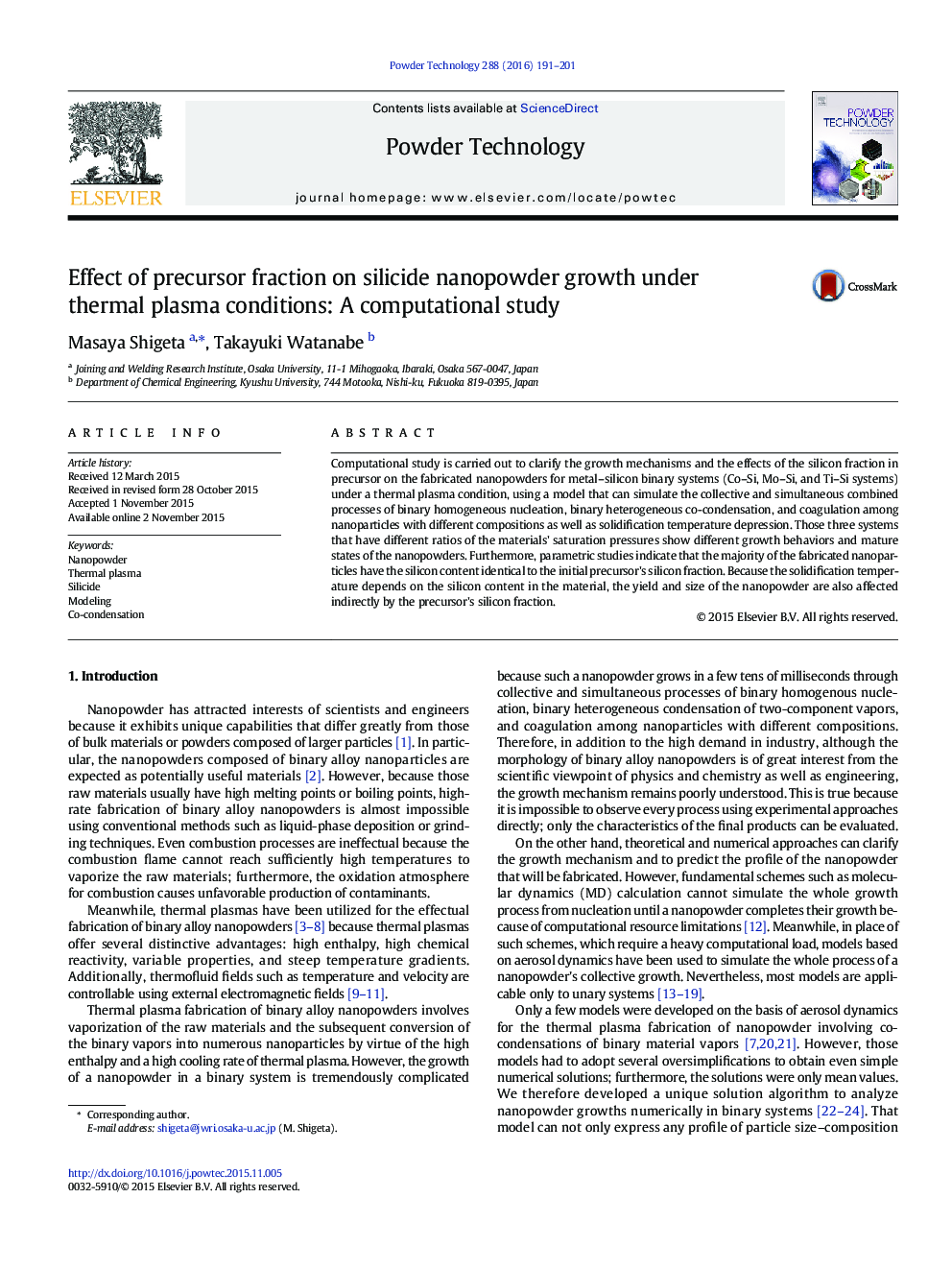| Article ID | Journal | Published Year | Pages | File Type |
|---|---|---|---|---|
| 235498 | Powder Technology | 2016 | 11 Pages |
•Computation reveals the collective growth mechanism of metal–silicide nanopowders.•Saturation pressure difference causes different growth behaviors of nanopowders.•Si content of most nanoparticles is identical to that of the initial precursor.•The yield and size of nanopowder are affected by the precursor's Si fraction.
Computational study is carried out to clarify the growth mechanisms and the effects of the silicon fraction in precursor on the fabricated nanopowders for metal–silicon binary systems (Co–Si, Mo–Si, and Ti–Si systems) under a thermal plasma condition, using a model that can simulate the collective and simultaneous combined processes of binary homogeneous nucleation, binary heterogeneous co-condensation, and coagulation among nanoparticles with different compositions as well as solidification temperature depression. Those three systems that have different ratios of the materials' saturation pressures show different growth behaviors and mature states of the nanopowders. Furthermore, parametric studies indicate that the majority of the fabricated nanoparticles have the silicon content identical to the initial precursor's silicon fraction. Because the solidification temperature depends on the silicon content in the material, the yield and size of the nanopowder are also affected indirectly by the precursor's silicon fraction.
Graphical abstractFigure optionsDownload full-size imageDownload as PowerPoint slide
